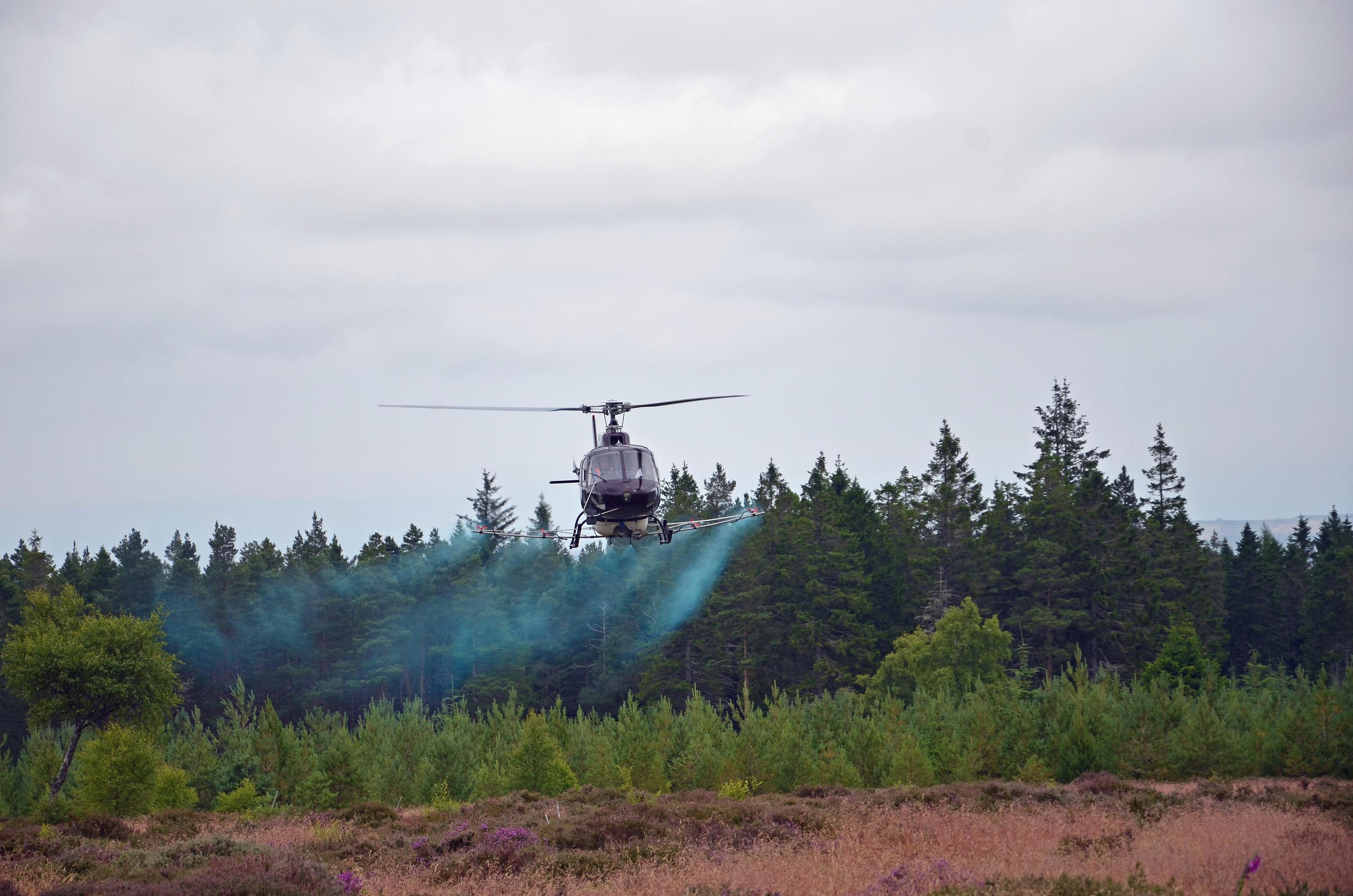Helicopter spraying to try and prevent a deadly tree disease in the north has been postponed – mainly because of weather.
A section of Millbuie Forest on the Black Isle was to be the second of three trials to help determine if the technique could be used as a last resort to help limit the damaging impact of the pine disease, needle blight.
The three-week trials by Forestry Commission Scotland were designed to determine whether or not the technique is safe, sustainable and effective for targeted use in Scottish forests.
And although the season for the potential use of fungicide to help manage this disease is now over, work has already started to plan next year’s trial.
Hugh Clayden, the commission’s tree health policy adviser, said: “Following last year’s small but successful trial near Elgin we’d hoped to be able to treat a small area within Millbuie Forest on the Black Isle this year, but over the period when we could have flown it was often either too wet or, odd though it may sound, not windy enough for the effective use of the application system.
“Additionally, on the few occasions when a suitable weather window opened up we were either unable at such short notice to provide the necessary ground crew for the stringent pre and post-spraying monitoring work, or a helicopter with a pilot licensed to undertake this skilled work was simply not available.”
The fungal pathogen responsible for the disease attacks pine needles, which in turn limits the rate of tree growth, potentially leading to their death as well as reducing the timber yield and value.
The potential future impact of the disease on Caledonian pinewoods highlights the need to find ways to manage it now.
The commission has a three-year permission from the Chemical Regulations Directorate to conduct these aerial application trials, similar to crop dusting.
The ultra low volume aerial application technique requires wind speeds of 10-25 knots to provide sufficient canopy turbulence to ensure the microscopic droplets dispersed by the spraying system are retained in the upper tree canopy.
Results from last year’s trial at Monaughty, Moray, confirmed that over 95% was captured in the top canopy rather than falling to the ground straight away.
